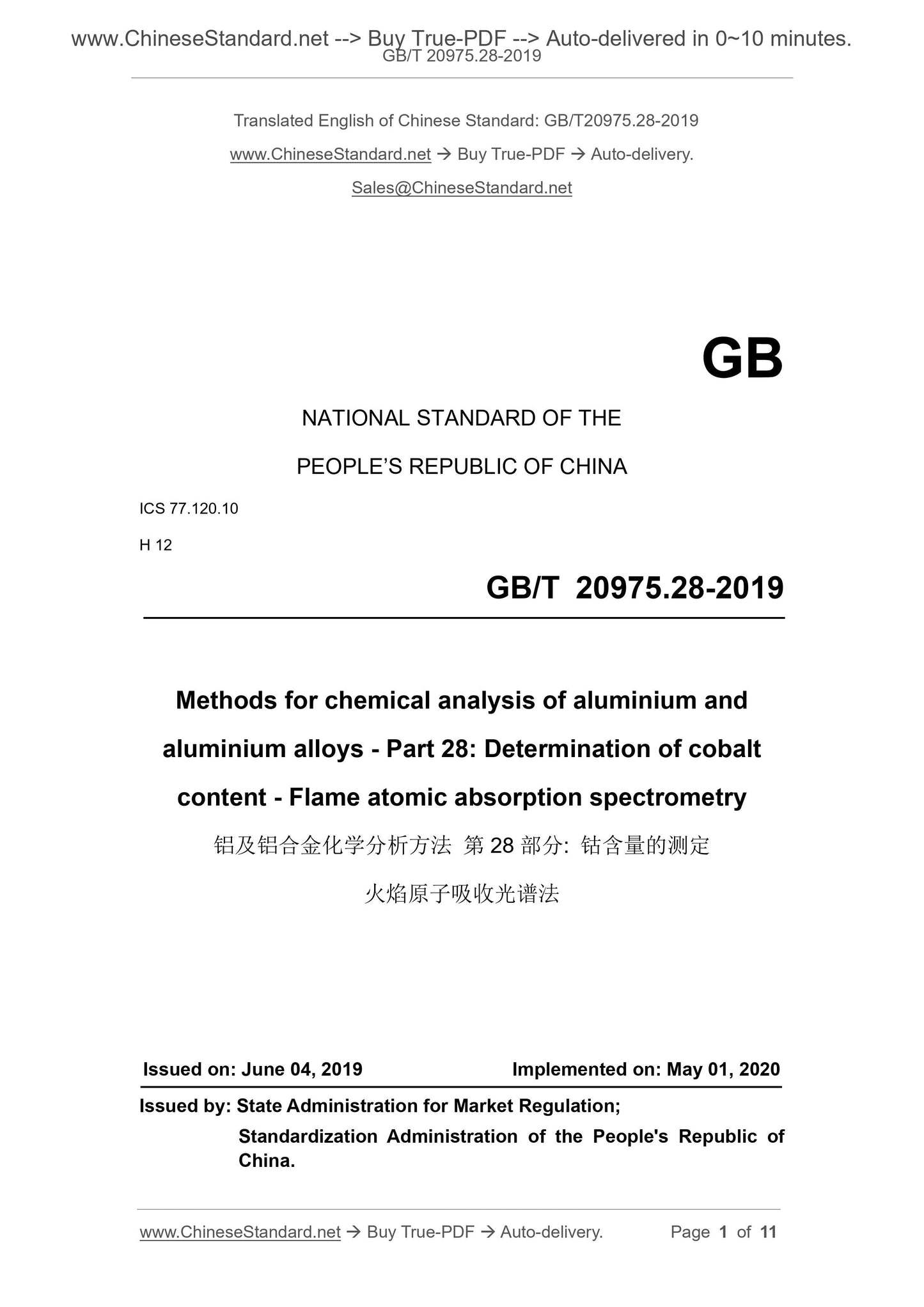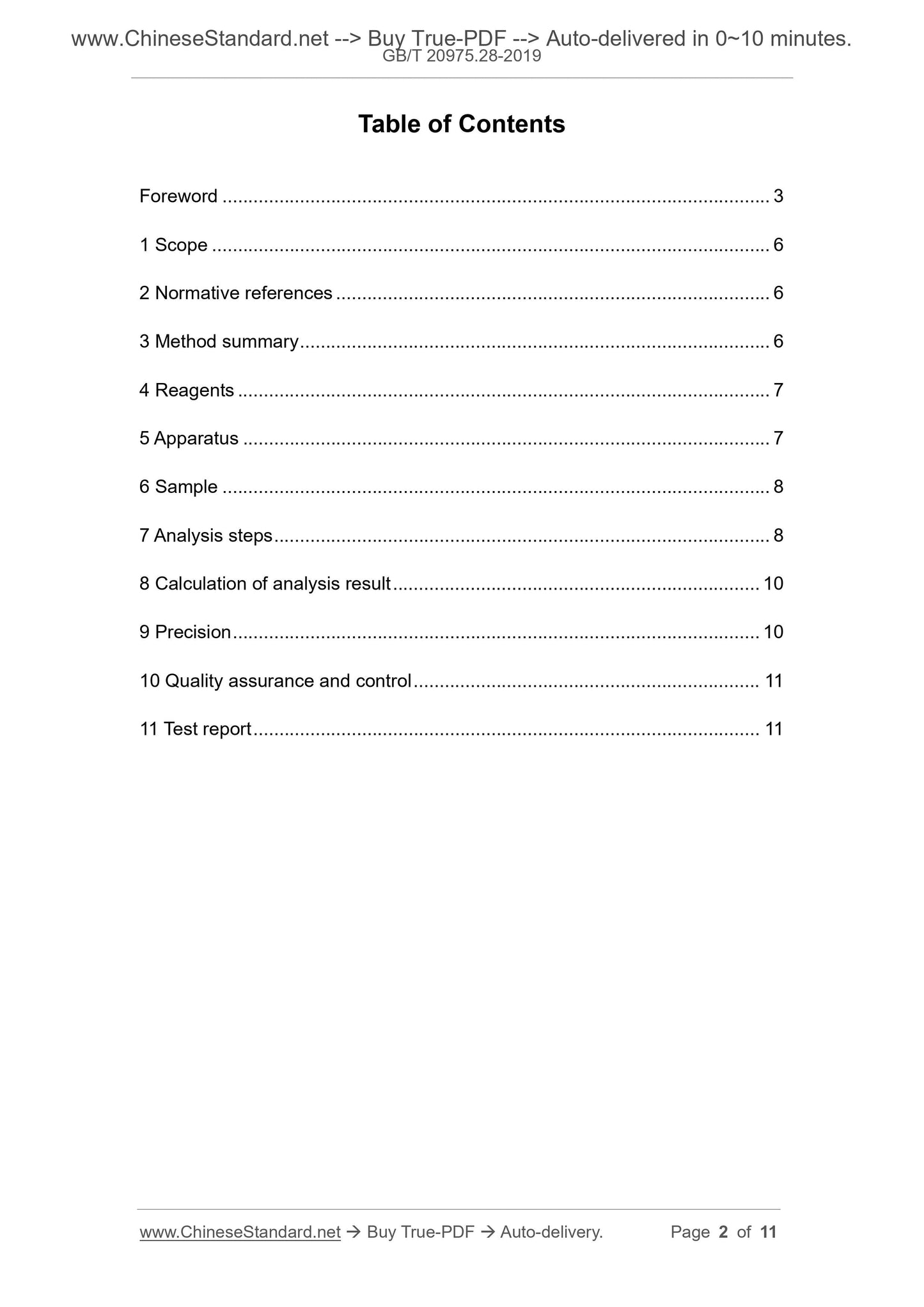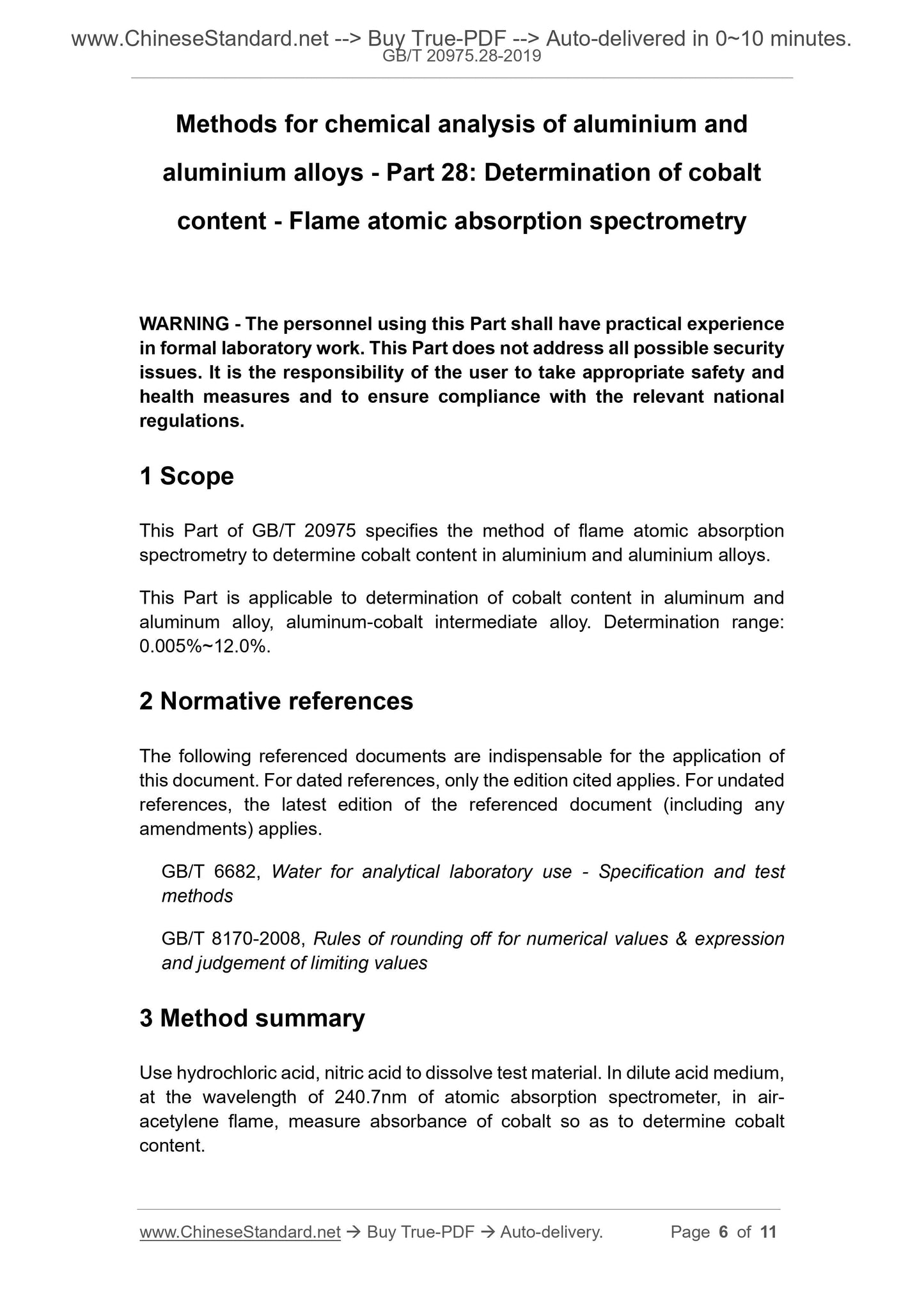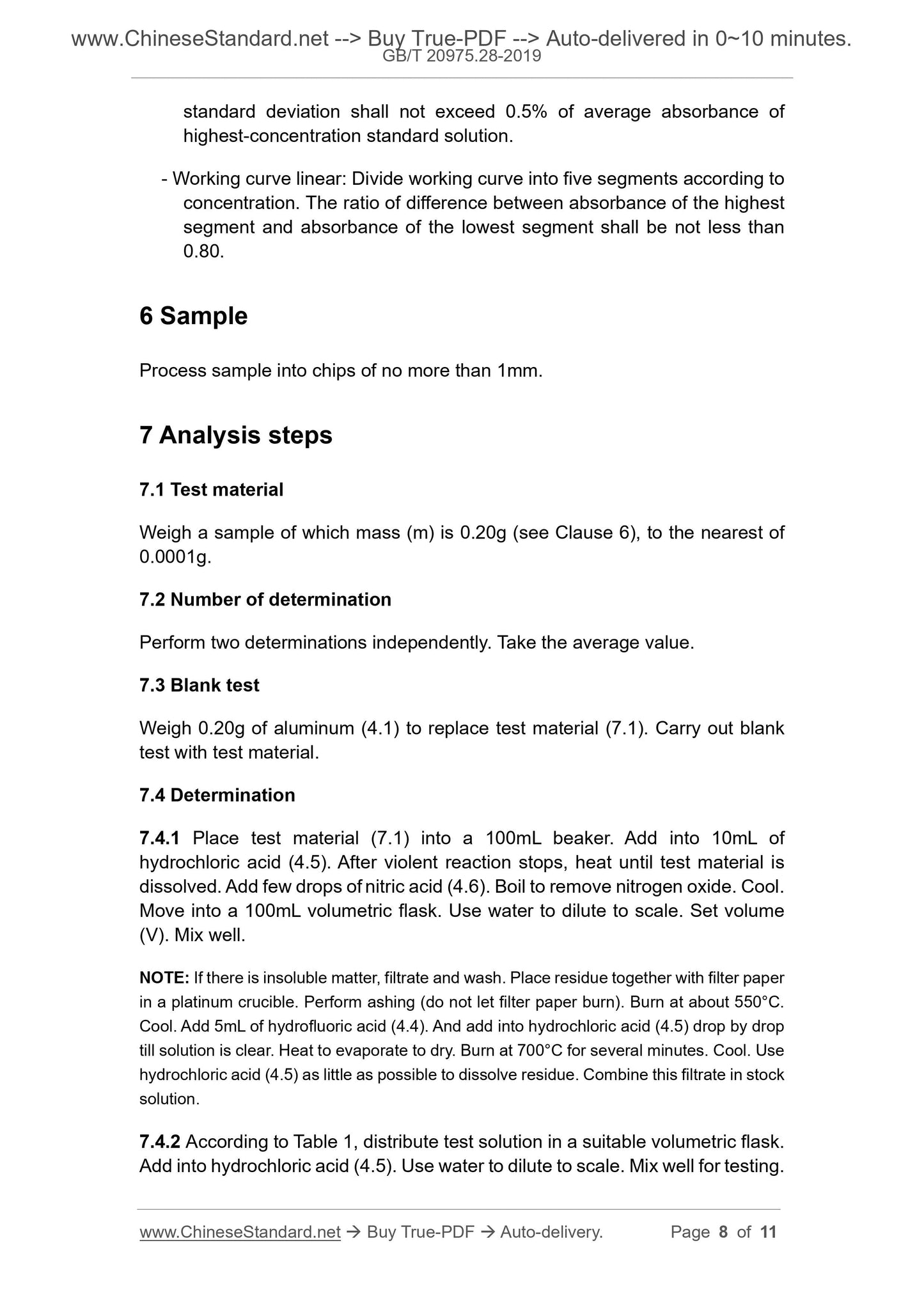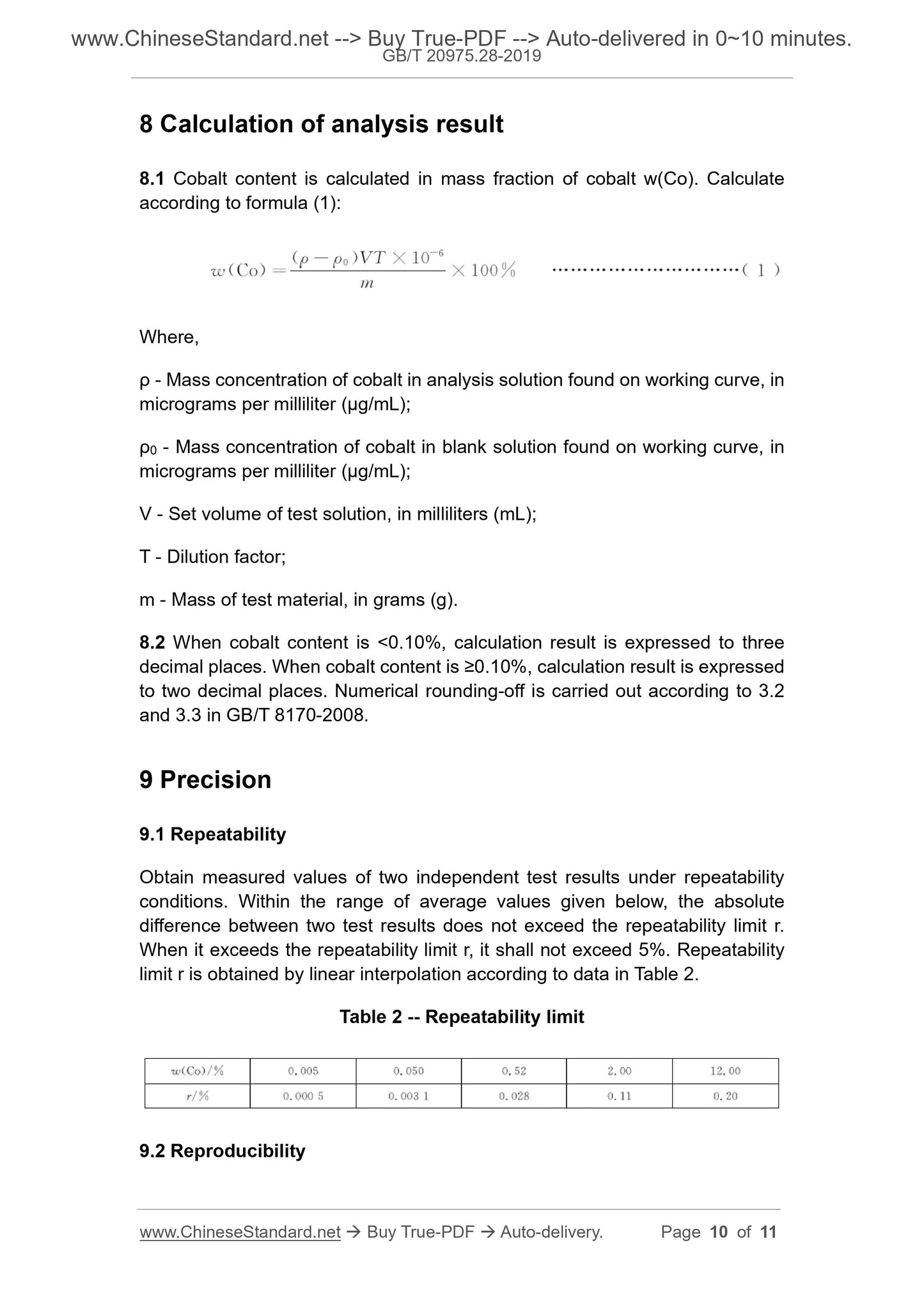1
/
of
5
www.ChineseStandard.us -- Field Test Asia Pte. Ltd.
GB/T 20975.28-2019 English PDF (GB/T20975.28-2019)
GB/T 20975.28-2019 English PDF (GB/T20975.28-2019)
Regular price
$90.00
Regular price
Sale price
$90.00
Unit price
/
per
Shipping calculated at checkout.
Couldn't load pickup availability
GB/T 20975.28-2019: Methods for chemical analysis of aluminium and aluminium alloys - Part 28: Determination of cobalt content - Flame atomic absorption spectrometry
Delivery: 9 seconds. Download (and Email) true-PDF + Invoice.Get Quotation: Click GB/T 20975.28-2019 (Self-service in 1-minute)
Newer / historical versions: GB/T 20975.28-2019
Preview True-PDF
Scope
This Part of GB/T 20975 specifies the method of flame atomic absorptionspectrometry to determine cobalt content in aluminium and aluminium alloys.
This Part is applicable to determination of cobalt content in aluminum and
aluminum alloy, aluminum-cobalt intermediate alloy. Determination range:
0.005%~12.0%.
Basic Data
| Standard ID | GB/T 20975.28-2019 (GB/T20975.28-2019) |
| Description (Translated English) | Methods for chemical analysis of aluminium and aluminium alloys - Part 28: Determination of cobalt content - Flame atomic absorption spectrometry |
| Sector / Industry | National Standard (Recommended) |
| Classification of Chinese Standard | H12 |
| Classification of International Standard | 77.120.10 |
| Word Count Estimation | 6,691 |
| Date of Issue | 2019-06-04 |
| Date of Implementation | 2020-05-01 |
| Quoted Standard | GB/T 6682; GB/T 8170-2008 |
| Issuing agency(ies) | State Administration for Market Regulation, China National Standardization Administration |
| Summary | This standard specifies the method for the determination of cobalt content in aluminum and aluminum alloys by flame atomic absorption spectrometry. This standard applies to the determination of cobalt content in aluminum, aluminum alloys, and aluminum-cobalt master alloys. Measurement range: 0.005% to 12.0%. |
Share
